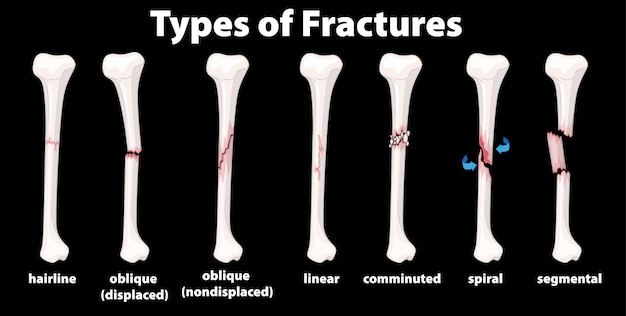

Bones make up the skeletal system of the human body.
The femur is the longest bone in the human body.
The human hand consists of 27 individual bones.
Bones are stronger than steel in terms of weight-bearing capacity.
The smallest bone in the human body is the stirrup bone, found in the ear.
Red blood cells are produced in the bone marrow.
Bones are constantly being remodeled and reshaped by our body.
The skeleton of an adult human consists of 206 bones.
Bones provide support and protection to vital organs.
Osteoporosis is a disease characterized by weak and fragile bones.
Bones also store minerals like calcium and phosphorus.
The human skull is made up of 22 bones.
Bones can repair themselves in case of small fractures.
The collarbone is the only long bone of the body lying horizontally.
The thigh bone is the strongest and largest bone in the human body.
Cartilage, a flexible connective tissue, helps to cushion bones at joints.
The hyoid bone is the only bone that is not connected to any other bone in the body.
Fossils of dinosaur bones provide valuable information about prehistoric life.
Bone marrow transplantation is a life-saving treatment for some blood diseases.
Bones help maintain the body’s acid-base balance by releasing or absorbing minerals.
Teeth are considered to be part of the skeletal system, as they are composed of bone-like tissue.
Skull bones protect the brain, which is the body’s command center.
The tibia, also known as the shinbone, is the second-largest bone in the body.
The process of bone formation is called ossification.
Bones are living tissues with their own blood supply.
Astronauts lose bone mass in space due to the lack of gravity.
Bone density decreases with age, making the elderly more prone to fractures.
The human body has more bones at birth than in adulthood.
Animals with an exoskeleton, like insects, have their skeleton on the outside.
Bones allow for movement and provide attachment points for muscles.
Bones also play a role in the production of white blood cells, which are important for the immune system.
Bones can store fat in the form of yellow marrow.
Bone cancer can occur, although it is relatively rare compared to other types of cancer.
Some animals, like sharks, have skeletons made entirely of cartilage.
Bones have the ability to heal themselves through a process called remodeling.
The human spinal column consists of 33 individual bones called vertebrae.
Babies are born without kneecaps, as they develop over time.
Ribs protect the lungs and heart from injuries.
Bones provide structure and shape to the body.
The cranium, or skull, protects the brain from injury.
Bones contain nerves and blood vessels.
The radius and ulna bones in the forearm allow for pronation and supination of the hand.
Bones are classified into five types: long, short, flat, irregular, and sesamoid.
The coccyx, commonly known as the tailbone, is made up of fused vertebrae.
Bones are essential for everyday activities like walking, running, and even sitting.
Around the world, coffee enthusiasts enjoy Monin coffee concentrate since it is a multipurpose product. Conveniently combining…
The Importance of Choosing the Right Shower for Your Bathroom Renovating your bathroom can be…
Usain Bolt holds the record for the fastest 100-meter sprint in history.Bolt was named Sportsman…
Love is in the air... and it smells suspiciously like chocolate!Roses are red, violets are…
Life's a beach, take a picture and relax.Sun, sand, and salty kisses. That's what beach…
Hungary is home to the largest thermal water cave system in the world.The Rubik's Cube…